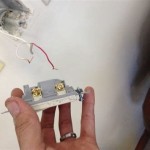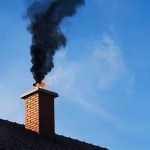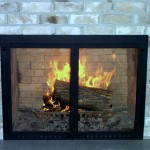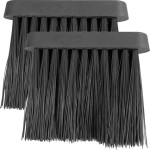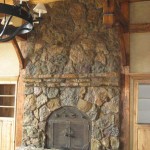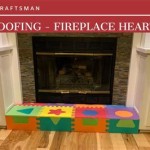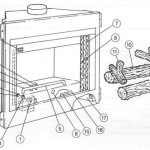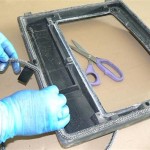Wood Burning Fireplace Inserts Reviews: A Comprehensive Guide
Wood burning fireplace inserts offer an efficient and aesthetic solution for homeowners looking to upgrade their existing masonry fireplace. Instead of simply enjoying an open fire, which can be significantly inefficient, an insert transforms the fireplace into a powerful heat source, improving overall home comfort and potentially reducing heating costs. This article provides a thorough overview of wood burning fireplace inserts, covering key considerations, features to look for, and a selection of models frequently reviewed and discussed among homeowners.
Understanding the Benefits of Wood Burning Fireplace Inserts
The primary benefit of a wood burning fireplace insert is enhanced heating efficiency. Traditional open fireplaces lose a significant amount of heat up the chimney. Inserts, on the other hand, are designed to radiate heat into the room. They typically feature a sealed firebox and a blower system that circulates heated air, ensuring consistent and effective distribution throughout the living space. This efficiency can translate to substantial savings on heating bills, particularly during colder months.
Another advantage is improved safety. Open fireplaces can pose risks such as sparks and embers escaping, potentially leading to fires. Inserts are enclosed units, minimizing the risk of stray embers and providing a more controlled burning environment. This added safety factor makes them a preferable option for families with children or pets.
Wood burning inserts also offer the aesthetic appeal of a traditional fireplace with modern convenience. Many models feature large viewing windows, allowing homeowners to enjoy the ambiance of a crackling fire. Additionally, inserts are often designed with various aesthetic options, including different finishes and door styles, allowing homeowners to match the insert to their existing decor.
Finally, in regions where wood is readily available and cost-effective, wood-burning fireplace inserts can be a sustainable heating option. Properly burning wood is a carbon-neutral process, as the carbon dioxide released during combustion is offset by the carbon dioxide absorbed during the tree's growth. This makes wood burning inserts a potentially environmentally responsible heating alternative.
Key Features to Consider When Choosing a Wood Burning Fireplace Insert
Selecting the right wood burning fireplace insert requires careful consideration of several key features. These factors will influence the insert's performance, efficiency, and overall suitability for a particular home.
Heating Capacity (BTU Output):
The BTU (British Thermal Unit) output of an insert indicates its heating capacity. Choosing an insert with the appropriate BTU output for the size of the room or area to be heated is crucial. An insert that is too small will not adequately heat the space, while an insert that is too large can lead to overheating and discomfort. Manufacturers typically provide BTU ratings and recommended heating areas for their inserts.Efficiency Rating:
The efficiency rating of a wood burning fireplace insert indicates how much of the fuel's energy is converted into usable heat. Higher efficiency ratings translate to less wood consumption and lower heating costs. Look for inserts with efficiency ratings of 75% or higher for optimal performance. EPA-certified models are generally more efficient and produce fewer emissions.Firebox Size:
The size of the firebox determines the length of logs that can be burned. A larger firebox allows for longer burn times and less frequent refueling. Consider the typical size of firewood available in the area and choose an insert with a firebox that accommodates those logs comfortably.Blower System:
A blower system is essential for effectively distributing heat from the insert throughout the room. Blower systems typically consist of a fan that circulates air around the firebox and pushes it out into the living space. Look for inserts with variable-speed blowers that allow for customized heat control.Emissions:
The Environmental Protection Agency (EPA) regulates emissions from wood burning appliances. EPA-certified inserts meet strict emission standards, reducing air pollution and promoting cleaner burning. When selecting an insert, prioritize EPA-certified models for environmental responsibility. Check for the EPA certification label on the insert or consult the manufacturer's specifications.Construction Materials:
The quality of the construction materials used in a wood burning fireplace insert affects its durability and longevity. Look for inserts constructed from heavy-gauge steel or cast iron, as these materials are known for their strength and heat retention properties. Consider the thickness of the steel or cast iron, as thicker materials generally provide better insulation and durability.Door and Viewing Window:
The door and viewing window are important aesthetic and functional elements of a wood burning fireplace insert. Choose a door style that complements the home's decor. Look for inserts with large viewing windows that allow for a clear view of the fire. The glass should be made of durable, heat-resistant material that can withstand high temperatures.Warranty:
A good warranty provides peace of mind and protects against potential defects or malfunctions. Look for inserts with comprehensive warranties that cover both parts and labor. Carefully review the warranty terms and conditions to understand the coverage limits and exclusions.Examining Popular Wood Burning Fireplace Insert Models
The market offers a range of wood burning fireplace inserts, each with different features, price points, and performance characteristics. Several models consistently receive positive reviews and are frequently recommended by homeowners and experts. This section highlights some of these models and their key attributes.
Osburn 2000:
The Osburn 2000 is a popular choice known for its efficient heating and user-friendly design. It features a large firebox, a powerful blower system, and an EPA-certified design. The Osburn 2000 is capable of heating large areas and provides long burn times.Vermont Castings Intrepid II:
The Vermont Castings Intrepid II is a compact and versatile insert that is well-suited for smaller fireplaces. It features a cast iron construction, a top-loading design, and a catalytic combustor for clean burning. The Intrepid II is known for its elegant design and efficient heating capabilities.Lopi Evergreen:
The Lopi Evergreen is a high-performance insert that combines efficiency, style, and convenience. It features a large viewing window, a bypass damper for easy startup, and a three-stage combustion system for clean burning. The Lopi Evergreen is capable of heating large areas and meeting strict emission standards.HearthStone Green Mountain 80:
The HearthStone Green Mountain 80 is a soapstone insert that provides exceptional heat retention and even heat distribution. Soapstone is a natural material that absorbs and radiates heat slowly, creating a comfortable and consistent warmth. The Green Mountain 80 is known for its efficiency, durability, and unique aesthetic appeal.Napoleon EPI3C:
The Napoleon EPI3C is a cost-effective option that offers a balance of performance and affordability. It features a durable steel construction, a large viewing window, and a blower system for efficient heat distribution. The Napoleon EPI3C is a popular choice for homeowners seeking a reliable and budget-friendly insert.Reviews for these and other models often focus on ease of use, heating effectiveness in specific square footage scenarios, and the longevity of various components. Many homeowners recommend professional installation to ensure proper operation and adherence to safety standards.
When considering any wood burning fireplace insert, it is crucial to consult with a qualified professional to assess the existing fireplace and chimney system to determine compatibility. Proper installation is essential for safe and efficient operation, and improper installation can void warranties and pose safety hazards. Furthermore, ensure the wood burned is properly seasoned hardwoods to maximize efficiency and minimize creosote buildup in the chimney.
.jpg.aspx?strip=all)
Top 5 Reasons To Upgrade A Wood Burning Insert Regency

The Best Wood Fireplaces Of 2024 Direct Learning Center

Wood Burning Fireplace Inserts And Chimney Authority

Superior Wood Burning Fireplace Review Fireplaces Direct Learning Center

Best Fireplace Inserts Of November 2024 Forbes Home

Top 6 Best Fireplace Inserts Insert Review 2024

Osburn 2000 Black Epa Wood Stove Insert Review Forestry Reviews

Majestic Biltmore Wood Fireplace Series Fireplaces Direct Learning Center

What Will Make Your Fireplace Energy Efficient

Quadra Fire Expedition Ii Wood Insert Don S Stove

